Love is in the air.
Or, more specifically, in the snapdragons.
If you maintain a pollinator garden, you've probably seen female European wool carder bees (Anthidium manicatum) nectaring on flowers or scraping or carding fuzz for their nests. You've probably seen the males being thoroughly territorial, protecting their turf, bodyslamming other insects off blossoms, and chasing the girls.
Last weekend, however, we encountered--and photographed--a different kind of behavior.
Reproductive behavior.
A male on a mission.
And a time to engage in a little insect wedding photography. (See images below)
About Size of Honey Bees
The European wool carder bees, about the size of honey bees, are fascinating to watch--and they're striking in color as well. Their yellow faces and yellow markings on their black abdomens readily distinguish them.
Males are considerably larger than females, and have a spine on either side of the last two abdominal segments and three spines on the last segment, according to Lynn Kimsey, director of the Bohart Museum of Entomology and professor of entomology at UC Davis. Those spines have been mistaken for stingers, but only females have stingers.
Research entomologist Tom Zavortink of the Bohart Museum and colleague Sandy Shanks wrote about the bee in the 2008 edition of the Pan-Pacific Entomologist. The bee belongs to the family Megachilidae (which also includes leafcutter and mason bees, among others). First introduced into the United States (New York) from Europe in 1963, it quickly spread across the continent. It was confirmed in Colorado in 2005, Missouri in 2006, and Maine, Michigan, Maryland and California (Sunnyvale) in 2007, the entomologists wrote. They found the species in Davis in 2007.
Kimsey says the carder bee was well established in the Central Valley by 2008. We spotted it in Vacaville in the spring of 2010 and now try to plant three of its preferences: the fuzzy lamb's ear (Stachys byzantine in the mint family Lamiaceae), snapdragons (Scrophulariacae); and foxgloves (Plantaginaceae).
The welcome mat is out. So is the red carpet.
Attached Images:
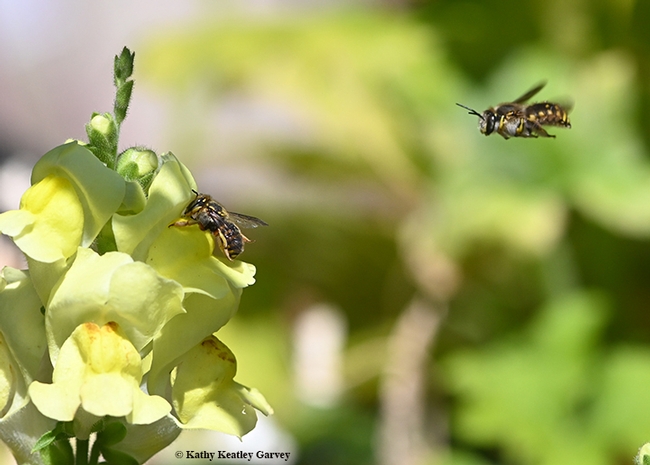
First in series: A male European wool carder bee (Anthidium manicatum) targets a female foraging on a snapdragon. (Photo by Kathy Keatley Garvey)
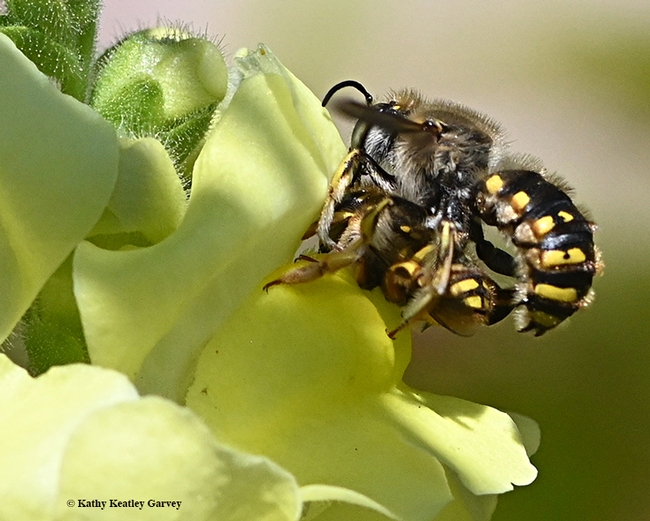
Second in series: Male European wool carder bee (Anthidium manicatum) connects. (Photo by Kathy Keatley Garvey)
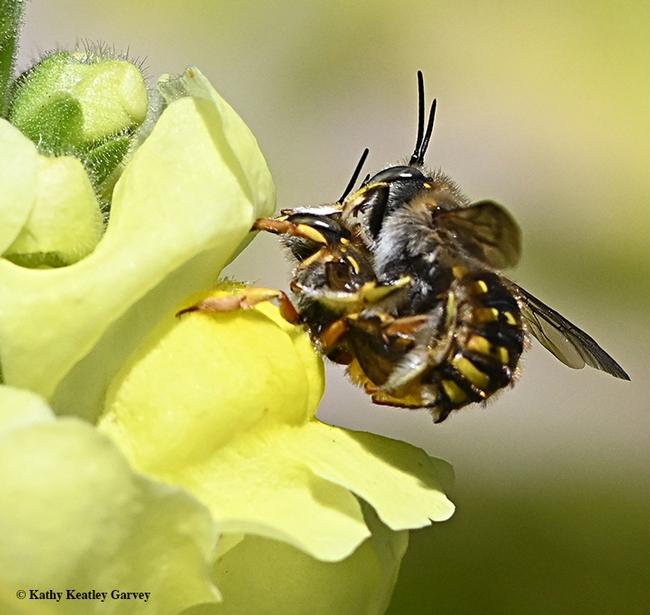
Third in series: European wool carder bees go about populating the species. (Photo by Kathy Keatley Garvey)
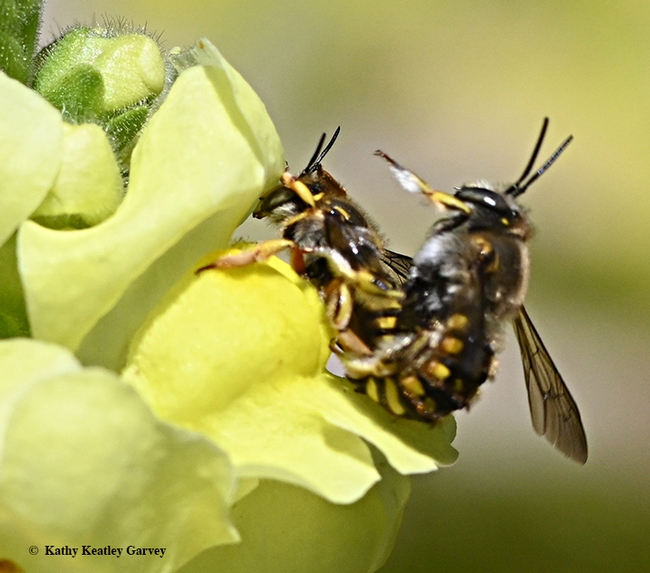
Fourth in series: Male European wool carder bee is almost finished. (Photo by Kathy Keatley Garvey)
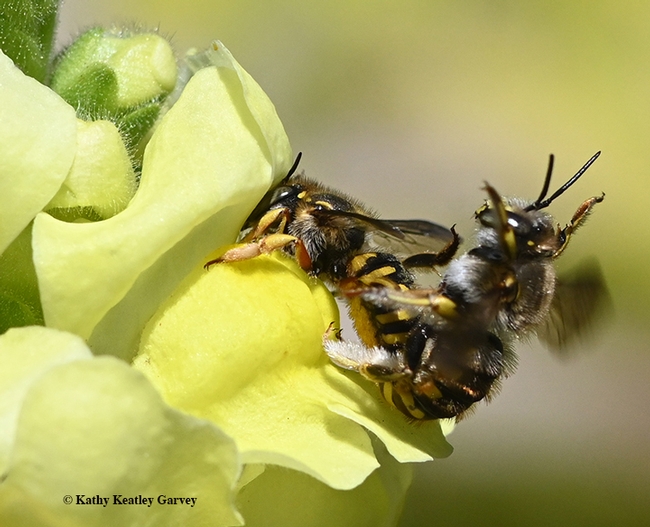
Fifth in series: Soon, the population of European wool carder bees will increase in this Vacaville pollinator garden. (Photo by Kathy Keatley Garvey)